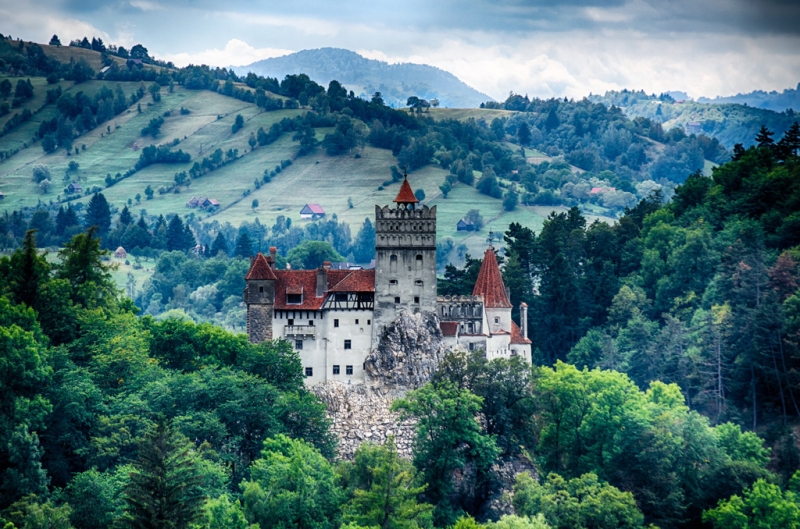
The medieval fortress of Bran, better known as Dracula’s castle, is located in a mountainous area not far from the ancient Transylvanian city of Brasov. Indeed, the impregnable castle, majestically rising on a rock above the gorge, perfectly fits the description of the ancestral nest of Dracula from the novel of the same name by Bram Stoker.
Today Bran is the main historical attraction of Romania; about half a million tourists visit the fortress every year. The castle owes much of its popularity to its associations with the most popular bloodsucker of all time. The vampire brand here (as indeed throughout Transylvania and Wallachia) is actively exploited to attract tourists; The castle has a small museum of Count Dracula.

Bram Stoker never visited Romania, so he created the image of the vampire castle based on descriptions and images of Bran, the only well-preserved castle in Romania, drawn from English books and periodicals of that time.
As for the prototype of Count Dracula, the cruel prince of Wallachia Vlad the Impaler, he had practically nothing to do with Bran Castle. There is a version that he was held captive for several days in the dungeons of the castle, and some historians believe that Tepes stopped here once or twice during his military campaigns, but these assumptions have never been proven.

Bran was built by order of the Romanian king at the end of the 14th century by the inhabitants of the city of Brasov on the eastern border of Transylvania, in the valley of the Turku River, on a rock with excellent views in all directions. In those days, the castle had two functions – it served as a fortress and at the same time it housed a customs office. It should be noted that Bran carried out his defensive functions with varying success for almost 500 years, until the 19th century, until, as a result of numerous redistributions of the territory of modern Romania, the border with Wallachia was moved to another place.

In 1918, when Transylvania became part of the united Romania, the grateful residents of the city of Brasov presented the castle (which had fallen into some disrepair by that time) to Queen Maria. The Queen ordered the castle to be renovated, and until the communists came to power, it served as the summer residence of the Romanian royal family.

10 years ago, in accordance with restitution laws, the castle was returned to the rightful heir of the Romanian kings, Dominic Habsburg. It should be noted that all this time he is trying to sell the castle, and will probably succeed sooner or later. So, if you want to see the residence of the fictional Count Dracula and plunge into the atmosphere of medieval Eastern Europe, it makes sense to hurry. It may well happen that the new owner will close free access to the castle for tourists.
When traveling, pay for purchases with a OneTwoTrip loyalty card, and up to 10% of the order amount on OneTwoTrip, as well as up to 2% of any purchases paid for with the card, will be returned to your account.
You can make online hotel reservations around the world on OneTwoTrip. The service offers more than two million accommodation properties.

